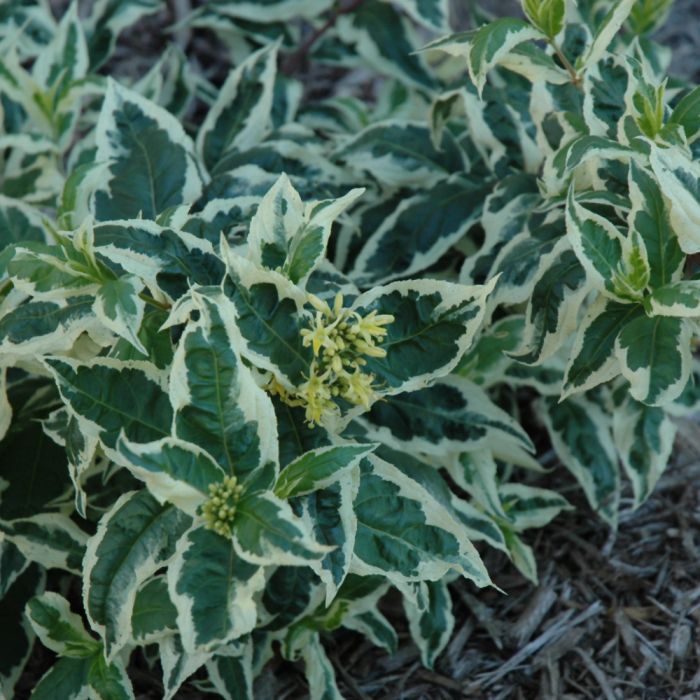Diervilla, Southern Bush Honeysuckle 'First Editions® Cool Splash®'




Out of stock
Coming soon, still growing- Sun Preference
- Full-Sun, Part-Sun
Description
This new introduction features attractive, horizontally branched stems with glowing white variegated leaves and yellow trumpet flowers on a compact shrub; best foliage variegation occurs in full sun; quite the colorful garden accent
Minnesota's Largest Selection of Shrubs
Elevate your landscaping with Gertens' unmatched variety of shrubs! Selecting the right shrubs for your backyard can enhance its beauty and functionality. Consider factors like sunlight, soil type, and mature size when choosing shrubs. For sunny areas, flowering shrubs like roses or hydrangeas can add color and charm. In shady spots, opt for shrubs like azaleas or hostas. Evergreen shrubs provide year-round interest and privacy, while deciduous shrubs offer seasonal color changes. At Gertens, we offer a wide selection of shrubs to suit every backyard need.
Details
Height: 4 feet
Spread: 4 feet
Sunlight:![]()
![]()
Hardiness Zone: 4a
Other Names: Southern Bush Honeysuckle
Description:
This new introduction features attractive, horizontally branched stems with glowing white variegated leaves and yellow trumpet flowers on a compact shrub; best foliage variegation occurs in full sun; quite the colorful garden accent
Ornamental Features
Cool Splash Bush Honeysuckle has attractive white-variegated dark green foliage throughout the season. The oval leaves are highly ornamental but do not develop any appreciable fall color. It features subtle panicles of yellow trumpet-shaped flowers along the branches in early summer. The fruit is not ornamentally significant.
Landscape Attributes
Cool Splash Bush Honeysuckle is a dense multi-stemmed deciduous shrub with a shapely form and gracefully arching branches. Its average texture blends into the landscape, but can be balanced by one or two finer or coarser trees or shrubs for an effective composition.
This shrub will require occasional maintenance and upkeep, and is best pruned in late winter once the threat of extreme cold has passed. It is a good choice for attracting butterflies and hummingbirds to your yard. Gardeners should be aware of the following characteristic(s) that may warrant special consideration;
- Suckering
Cool Splash Bush Honeysuckle is recommended for the following landscape applications;
- Mass Planting
- Hedges/Screening
- General Garden Use
- Naturalizing And Woodland Gardens
Planting & Growing
Cool Splash Bush Honeysuckle will grow to be about 4 feet tall at maturity, with a spread of 4 feet. It tends to fill out right to the ground and therefore doesn't necessarily require facer plants in front. It grows at a medium rate, and under ideal conditions can be expected to live for approximately 20 years.
This shrub does best in full sun to partial shade. It does best in average to evenly moist conditions, but will not tolerate standing water. It is not particular as to soil type or pH. It is somewhat tolerant of urban pollution. This is a selection of a native North American species.
| SKU | Container Size |
| S1252 | #2 Container (2 Gallon) |
* Not all container sizes may be available at this time. See store for details on specific container size availability.
More Information
| Gerten Grown Plants | Gerten Grown Plants |
|---|---|
| Sun Preference | Full-Sun, Part-Sun |
| Mature Height (Range) | 2 - 5 feet |
| USDA Hardiness Zone | 4, 5, 6, 7 |
| Common Family Name | Bush Honeysuckle |


